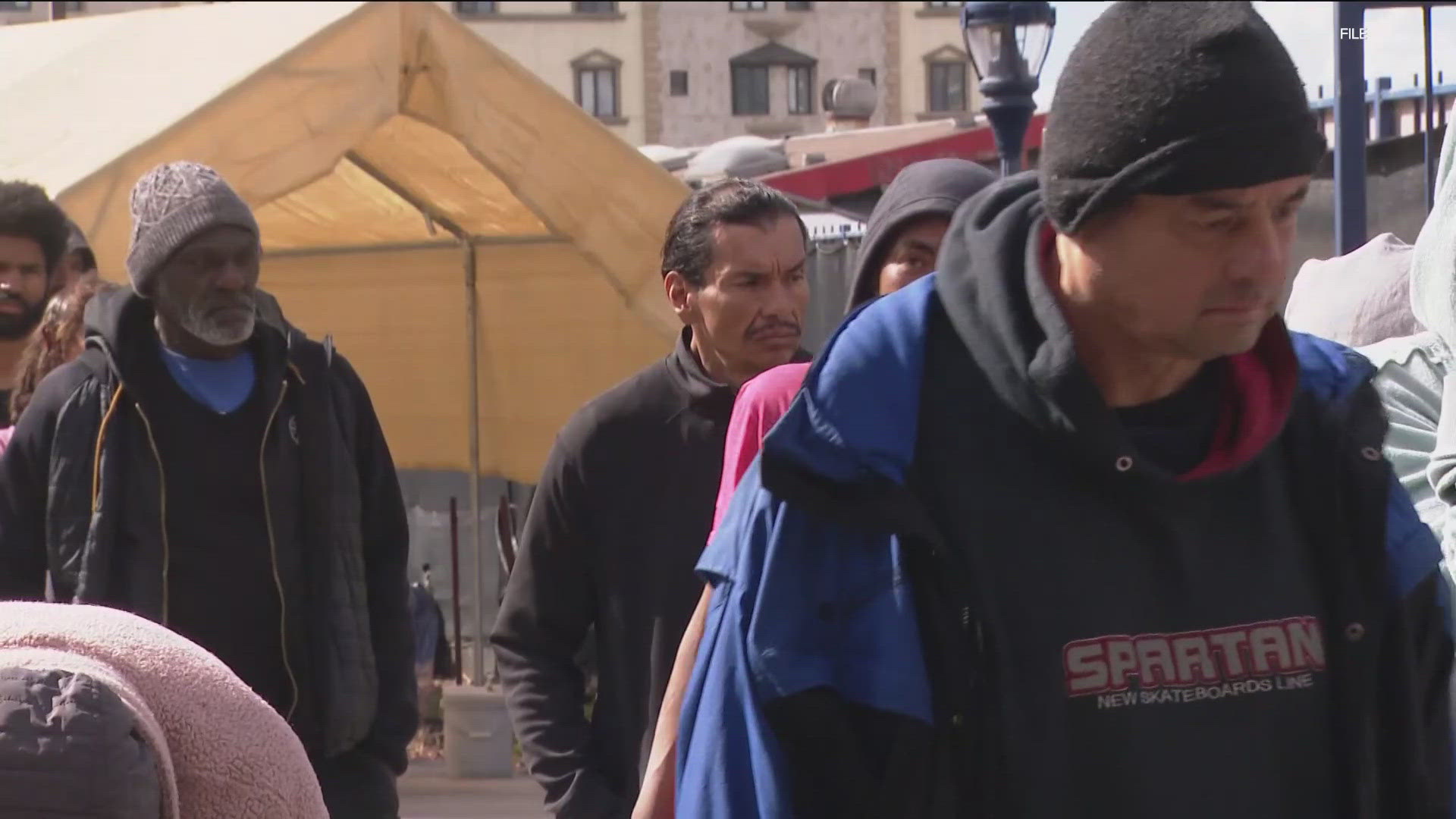SAN DIEGO COUNTY, Calif. — The number of people experiencing homelessness in San Diego County in 2024 increased by an estimated 3% over the previous year, according to data released Wednesday from January's Point-in-Time Count.
The count, conducted by more than 1,700 volunteers spread across San Diego County through the Regional Task Force on Homelessness, is a one-day snapshot of the minimum number of people experiencing homelessness throughout the region. The volunteers found no less than 10,605 people in the count, which included 6,110 unsheltered and 4,495 people in shelters and transitional housing.
In 2023, the number jumped up around 20% from the previous year.
"While a 3% increase is encouraging, we counted more people in unsheltered conditions across the region," said RTFH CEO Tamera Kohler. "We're seeing a significant increase in people living in their cars. This year's numbers suggest we have a continuing need for more sheltering options and support for the efforts many cities are now taking to combat this crisis.
"We must focus on populations like seniors, veterans, and people living in cars, where proven housing strategies can make a difference in the months and years ahead," she said.
According to the count, the number of homeless people increased by around 200 in each region of the county. The numbers also reflect a 44% increase in people living in their cars and a decreased in shelter or other temporary housing options.
"With the loss of federal emergency funding, including hotel/motel vouchers, and a shift toward safe sleeping and safe parking sites in several communities, RTFH is not surprised by these data points," a statement from the task force read.
According to the U.S. Department of Housing and Urban Development, safe sleeping and safe parking sites count as being unsheltered. In San Diego alone, 472 people were counted in the safe sleeping sites, and 285 individuals were in the safe parking sites.
"San Diegans should feel cautious optimism about this data," said RTFH Board Chair Ray Ellis. "While we are still seeing too many experiencing homelessness for the first time, our region is making the right kind of investments in critical system infrastructure and programs that make a difference."
Monthly reports created by RTFH show the region has not seen a month since March 2022 when more individuals exited homelessness than experienced homelessness for the first time, a 25-month streak.
Additionally, the report finds, from October 2022 to September 2023, the region's homeless response system interacted with more than 46,000 individuals, up from 41,000 the previous year.
"I hope this is the high water mark," said Continuum of Care Advisory Board Chair Pastor Rolland Slade. "Our board is proud of the work that communities, non-profits, religious groups and others are embracing.
"Vista opening up a navigation center, the county increasing funding for RTFH's diversion practice, Imperial Beach hiring a full time outreach worker - these actions add up and are crucial to slowing down what has been an accelerated crisis," he said. "There's a lot more work to do but this is good progress."
The point-in-time count found a 68% jump in Encinitas, 86% in Carlsbad and 93% in Vista. San Marcos saw the largest spike with more than 1,600% increase as the number of unsheltered people jumped from 2 to 35 people this year.
WATCH: 2024 point-in-time homeless count finds large increases in North San Diego County
"Unfortunately what we're seeing is an economic catastrophe where a growing number of seniors, a growing number of veterans and growing number of families with children simply can't afford the apartment they're living in and are becoming homeless," said Greg Anglea, the CEO of Interfaith Community Services.
Volunteers ask demographic questions of people they find experiencing homelessness. In 2024's report, they began the reporting of Hispanic ethnicity along with race for the first time.
According to the report's data, seniors experiencing homelessness saw less than a 1% decrease, while those found at Caltrans sites declined by 10%. A total of 81% of all those counted in the region said they first experienced homelessness in the county.
The oldest person found experiencing unsheltered homelessness was an 85-year-old Hispanic woman.
"Our biggest challenge remains the sky-high cost of housing across our region," Kohler said. "The long-term need for abundant housing for people of all income levels remains apparent. There are still too few units and too much need.
"Yet I'm heartened by this report. There are interventions for many of the populations we've seen an increase in that can make a real difference," she said. "Communities across the county, from Vista to National City, San Diego to La Mesa, are leaning into game-changer solutions. If we can keep people housed, quickly end homelessness for those sleeping in their cars, and continue to target vulnerable populations, San Diego has a fighting chance to see real change moving forward."
In 2023, the count found no less than 10,264 individuals experiencing homelessness across the region. This number included 5,171 unsheltered San Diegans with 5,093 individuals in shelters and transitional housing.

